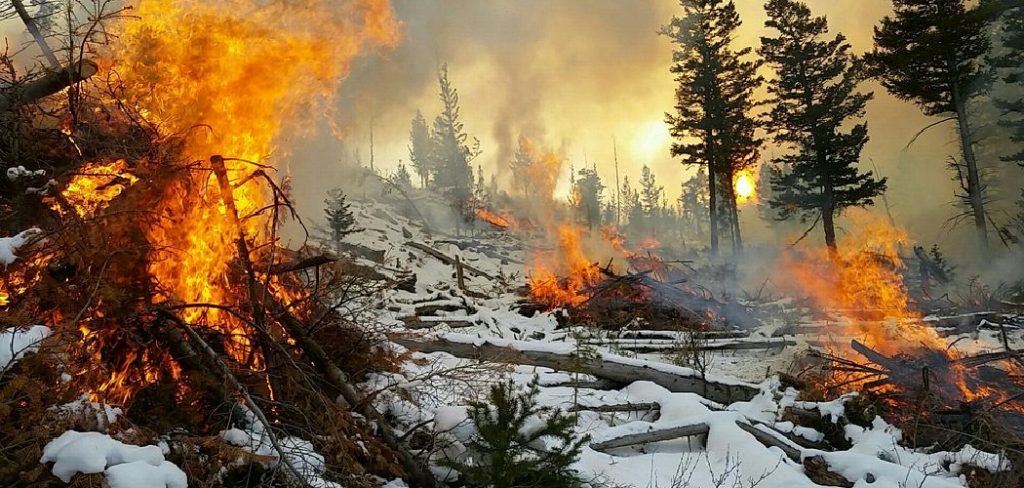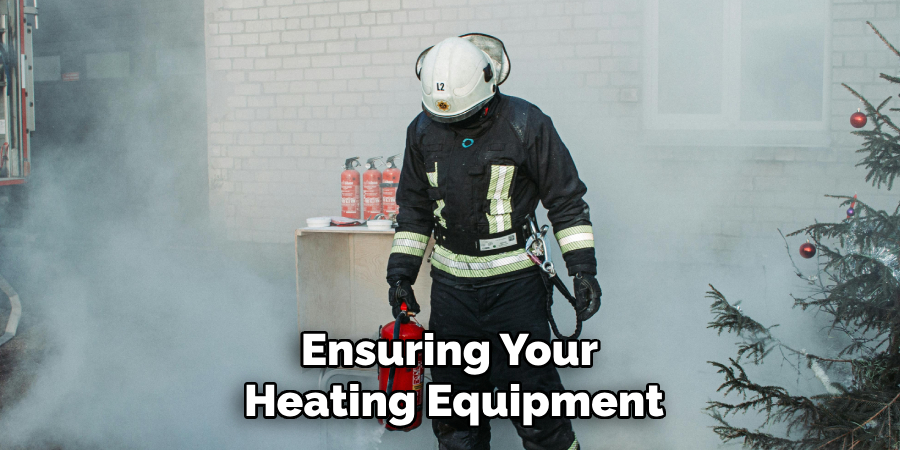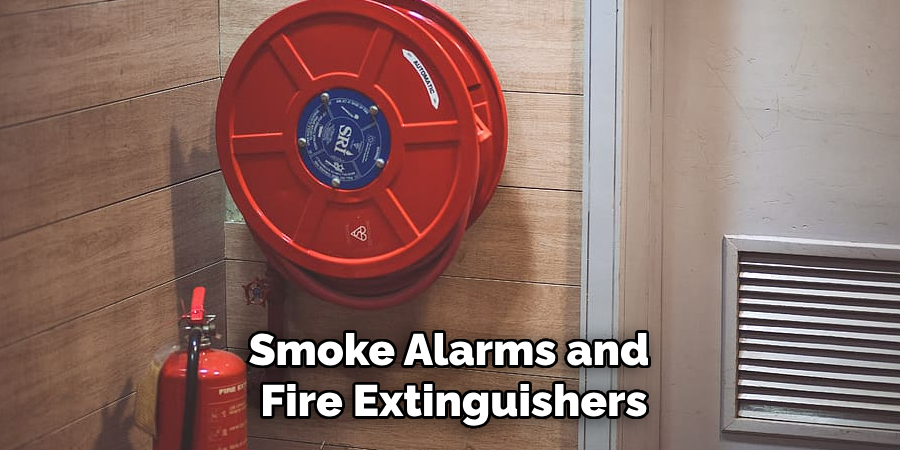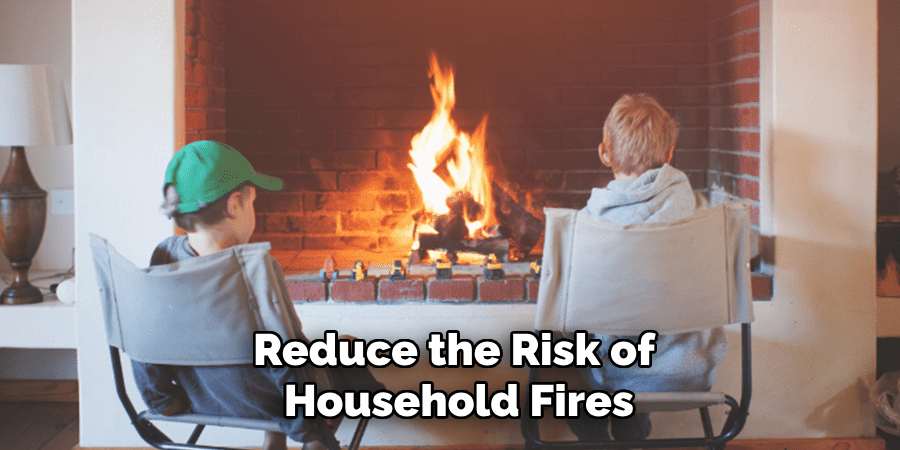Are you prepared for winter? Winter brings a lot of fun and excitement but also some potential fire hazards. It is essential to be aware of these hazards and take steps to reduce them to keep yourself and your loved ones safe during the colder months.

Winter is a season that brings colder temperatures, cozy nights by the fire, and increased use of heating appliances. However, it also comes with a heightened risk of fire hazards. From space heaters and fireplaces to overloaded electrical systems, the potential for accidents rises as we try to stay warm. Taking proactive measures to address these risks can help prevent dangerous situations and protect your home and loved ones.
This guide will explore practical tips on how to reduce fire hazards during winter.
What Are the Causes of Winter Fires?
The cold weather and festivities during winter can increase the risk of house fires. The following are some common causes of winter fires:
- Heating Appliances: Portable heaters, electric blankets, and fireplaces are all potential sources of heat that can pose a fire hazard if not used correctly.
- Cooking Accidents: With holiday cooking and baking in full swing, there is an increased chance of kitchen accidents leading to fires.
- Candles: During the colder months, candles are often used to decorate or create a cozy atmosphere. However, they can easily ignite nearby decorations or curtains if left unattended.
- Electrical Systems: Overloaded electrical systems due to increased usage and holiday lighting can lead to fires.
- Christmas Trees: An improperly maintained Christmas tree can quickly become a fire hazard, especially if it’s near a heat source or faulty lights.
These are just a few examples of common causes of winter fires. It is essential to be aware of these potential hazards and take necessary precautions to prevent them.
What Will You Need?
Before tackling any potential fire hazards, it is important to have the following items on hand:
- Smoke Alarms: Ensure you have working smoke alarms installed on every level of your home and outside each sleeping area.
- Fire Extinguishers: Keep a fire extinguisher in an easily accessible location, such as the kitchen or near heating appliances.
- Emergency Supplies: In case of a fire emergency, it’s crucial to have emergency supplies ready, such as a first aid kit and a designated meeting spot for all family members.
Once you have these items, it’s essential to regularly check and maintain them to ensure they are in proper working condition.
10 Easy Steps on How to Reduce Fire Hazards During Winter
Step 1. Inspect Heating Equipment Regularly:

Ensuring your heating equipment is in good working order is essential for reducing fire hazards. Start by having your furnace or heating system professionally inspected and serviced before the winter season begins. Check for any signs of wear and tear, such as frayed wires, loose connections, or unusual odors, when the equipment is in use. If you use space heaters, ensure they have proper safety features, such as an automatic shut-off if tipped over, and always place them on a flat, stable surface. For wood-burning stoves or fireplaces, have the chimney inspected and cleaned to remove any creosote buildup, which is highly flammable. Taking these precautions can significantly reduce the risk of equipment malfunction leading to a fire.
Step 2. Use Candles With Caution:
Candles can create a warm and cozy atmosphere during winter but pose a significant fire hazard if not used carefully. Always place candles on a stable, heat-resistant surface, away from flammable materials such as curtains, furniture, or decorations. Never leave a burning candle unattended, and extinguish it before leaving the room or going to bed. Consider using flameless LED candles as a safer alternative, especially if children or pets are in the home. You can enjoy their ambiance while minimizing fire risk by exercising caution when using candles.
Step 3. Maintain Smoke Alarms and Fire Extinguishers:
Smoke alarms and fire extinguishers are critical tools in fire prevention and safety. Ensure smoke alarms are installed on every level of your home, particularly near sleeping areas, and test them monthly to verify they function correctly. Replace the batteries at least once a year or as needed. Fire extinguishers should also be kept in easily accessible locations, such as the kitchen, garage, or near fireplaces. Ensure they are appropriate for household use and check the pressure regularly to confirm they are ready for use in an emergency. By maintaining these essential tools, you can act quickly in the event of a fire and potentially save lives and property.

Step 4. Create and Practice a Fire Escape Plan:
Preparing a fire escape plan is essential to ensure everyone in your household knows how to respond in case of a fire. Start by identifying at least two exits from every room, such as doors and windows, and ensure that these exits are accessible and unobstructed. Designate a safe meeting point outside the home where everyone can gather. Practice the escape plan with all household members, including children, the elderly, and pets, at least twice a year to ensure everyone is familiar with the process. Rehearsing the plan regularly can make a critical difference in staying calm and prepared during an emergency.
Step 5. Install Window & Door Alarms:
Consider installing window and door alarms to add an extra layer of protection against potential intruders or burglars during the winter months. These alarms can also serve as a warning in case of a fire, allowing for prompt evacuation. There are many affordable options available that are easy to install and use.
Step 6. Keep Flammable Materials Away From Heat Sources:
It is crucial to ensure that flammable items like paper, curtains, furniture, rugs, or clothing are kept safe away from heat sources such as space heaters, fireplaces, stoves, and radiators. A minimum distance of three feet is generally recommended. Also, never leave open flames unattended, like candles or a fireplace. Make sure to use fire-resistant mats under space heaters or wood stoves, and always follow manufacturer guidelines for the safe use of heating equipment. Regularly inspect heat sources for wear or malfunction, as faulty equipment can significantly increase the risk of accidental fires. These precautions can help prevent dangerous incidents and protect your home during the colder months.
Step 7. Properly Store and Handle Flammable Liquids:
Flammable liquids such as gasoline, paint thinners, or cleaning products should always be stored in approved, clearly labeled containers and kept in a cool, well-ventilated area away from heat sources and open flames. Ensure these items are stored out of reach of children and pets to prevent accidental spills or exposure. When using flammable liquids, follow all safety instructions on the label and avoid smoking or using them near any ignition sources. Dispose of any unused or expired flammable liquids according to local regulations to minimize potential hazards and keep your home safe.

Step 8. Ensure Electrical Cords are in Good Condition:
Inspect all electrical cords and outlets for any signs of damage, such as frayed wires, cracked insulation, or loose connections. Replace or repair damaged cords immediately to prevent potential electrical fires. Avoid overloading outlets by using extension cords and power strips sparingly and never run them under rugs or furniture where they can become overheated. Consider having an electrician inspect your home’s wiring if you have an older house or notice any recurring issues with your electrical system.
Step 9. Keep Fire Hazards Outside:
Store flammable materials such as firewood, propane tanks, and gasoline in safe, designated areas away from your home and other structures. To minimize fire risks, keep these items in well-ventilated spaces, ideally in a detached shed or storage unit. Ensure that outdoor grilling equipment is cleaned regularly and positioned safely from walls, overhangs, or combustible materials. Additionally, clear any dried leaves, debris, or overgrown vegetation from around your property, as they can fuel a fire. Maintaining a defensible space, especially in areas prone to wildfires, is crucial to protect your home and surroundings from the potential spread of flames.
Step 10. Test Smoke and Carbon Monoxide Detectors Regularly:
Ensure your smoke and carbon monoxide detectors are in proper working condition by testing them at least once a month. Replace batteries annually or as the manufacturer recommends, and consider upgrading to models with long-life batteries or interconnected systems for added safety. These devices are critical for providing early warning signs of danger, giving your family the time to evacuate safely in an emergency. Don’t neglect this vital step in protecting your home and loved ones.
Following these ten simple steps can significantly reduce the risk of household fires and keep your home safe during the winter months.

Conclusion
Winter often increases the risk of fire hazards, but with the proper precautions, you can ensure your safety and peace of mind.
By maintaining heating equipment, using fireplaces and candles responsibly, testing smoke detectors, and creating a defensible space, you are taking proactive steps to reduce potential risks. Simple acts like regularly inspecting electrical appliances and practicing good habits around flammable materials can go a long way in preventing fires.
Hopefully, the article on how to reduce fire hazards during winter has provided some valuable insights and practical tips for keeping your home safe and cozy throughout the winter season. Stay safe, stay warm!

